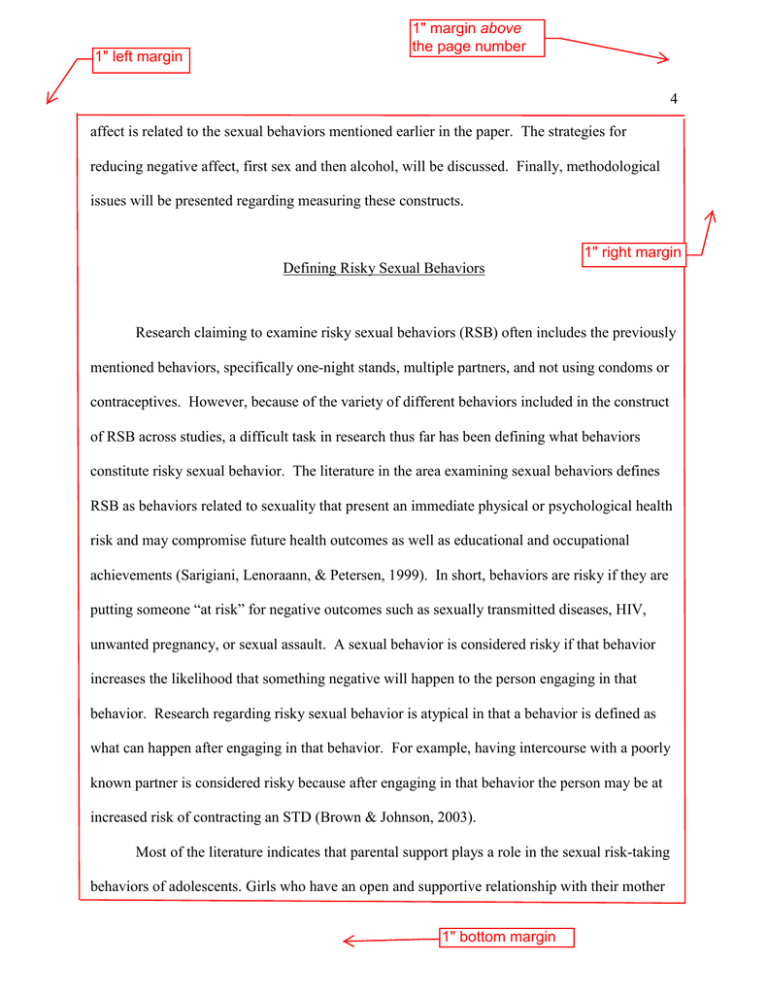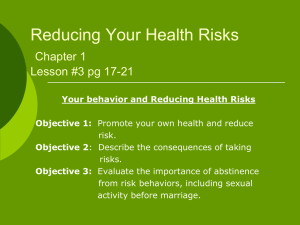
1" left margin
1" margin above
the page number
4
affect is related to the sexual behaviors mentioned earlier in the paper. The strategies for
reducing negative affect, first sex and then alcohol, will be discussed. Finally, methodological
issues will be presented regarding measuring these constructs.
1" right margin
Defining Risky Sexual Behaviors
Research claiming to examine risky sexual behaviors (RSB) often includes the previously
mentioned behaviors, specifically one-night stands, multiple partners, and not using condoms or
contraceptives. However, because of the variety of different behaviors included in the construct
of RSB across studies, a difficult task in research thus far has been defining what behaviors
constitute risky sexual behavior. The literature in the area examining sexual behaviors defines
RSB as behaviors related to sexuality that present an immediate physical or psychological health
risk and may compromise future health outcomes as well as educational and occupational
achievements (Sarigiani, Lenoraann, & Petersen, 1999). In short, behaviors are risky if they are
putting someone “at risk” for negative outcomes such as sexually transmitted diseases, HIV,
unwanted pregnancy, or sexual assault. A sexual behavior is considered risky if that behavior
increases the likelihood that something negative will happen to the person engaging in that
behavior. Research regarding risky sexual behavior is atypical in that a behavior is defined as
what can happen after engaging in that behavior. For example, having intercourse with a poorly
known partner is considered risky because after engaging in that behavior the person may be at
increased risk of contracting an STD (Brown & Johnson, 2003).
Most of the literature indicates that parental support plays a role in the sexual risk-taking
behaviors of adolescents. Girls who have an open and supportive relationship with their mother
1" bottom margin

